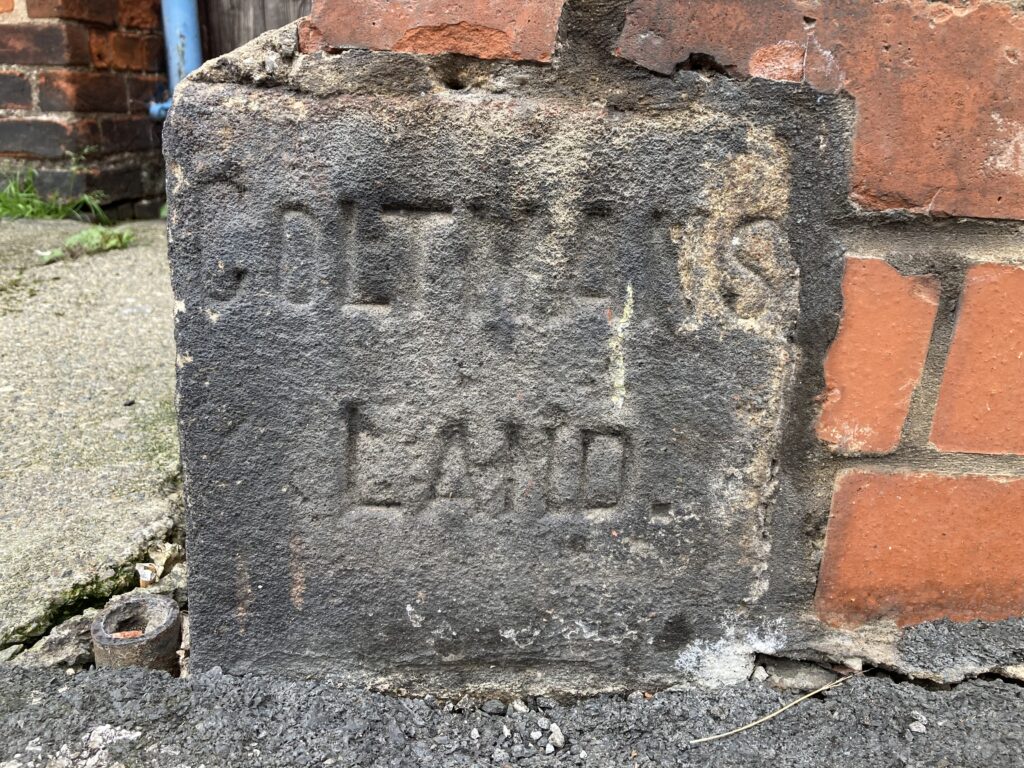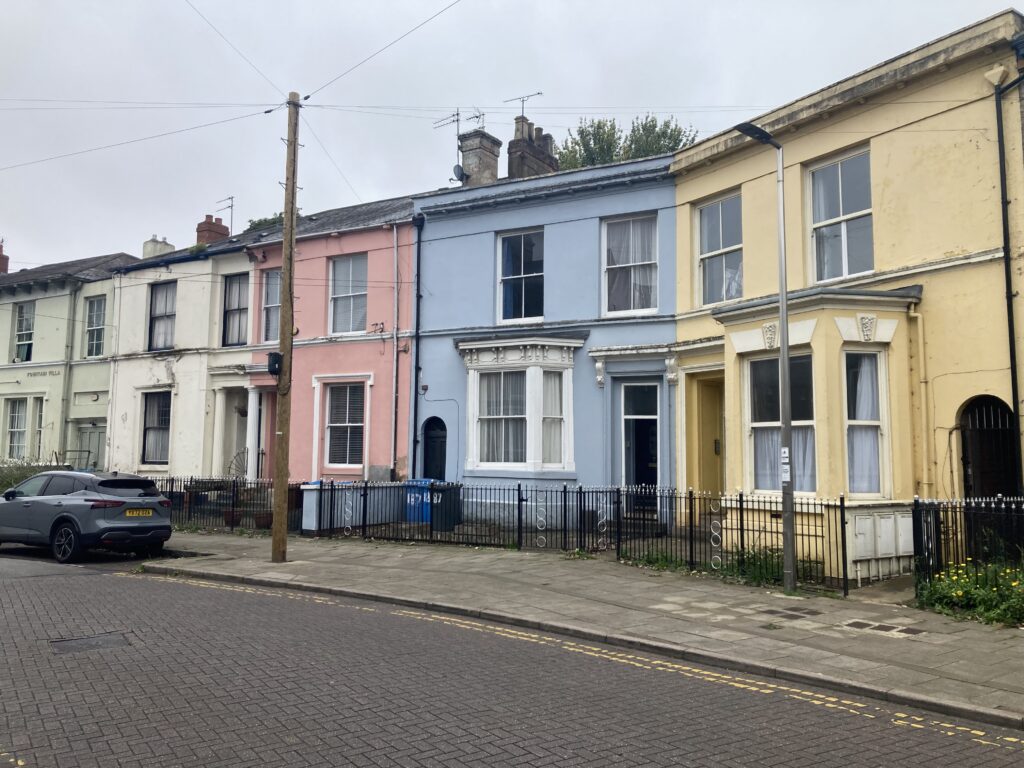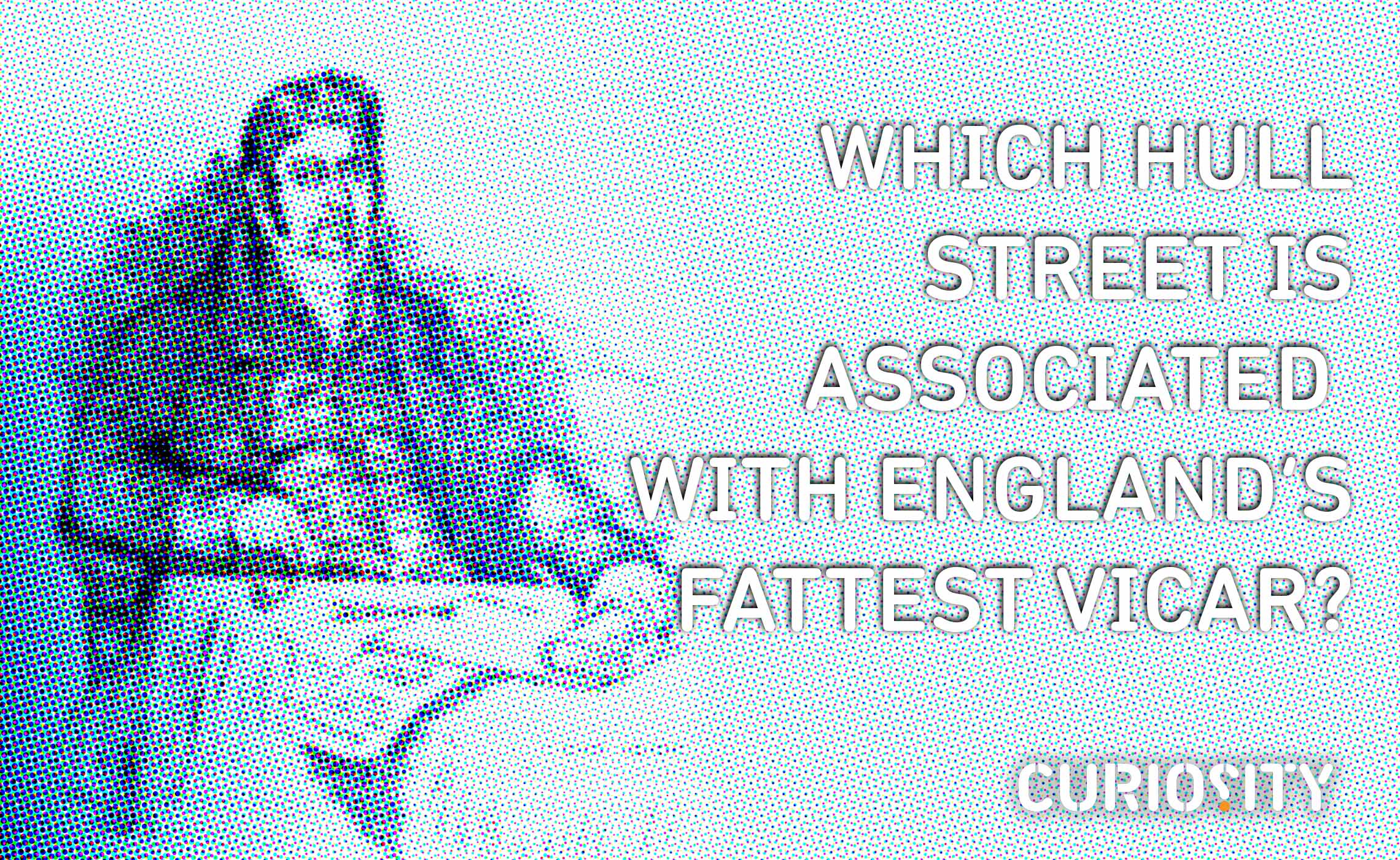Our stout clergyman correspondent Angus Young gets perilously close to fat-shaming in this cautionary tale of street names and scale busting.

Blink and you might miss a small rectangular stone which forms part of one of two brick pillars outside a property where King’s Bench Street meets Saner Street. Encrusted in decades worth of grime, it’s believed to be only surviving one of its kind in Hull. The stone’s precise age is unclear but the reason why it was laid there in the first place can just about be seen through the muck. Carved into the stone are two words – Coltman’s Land – which confirm it was once a visual marker for the boundary of land owned by the Coltman family.
Before its acquisition by the Coltman dynasty, much of the pastureland which made up Myton Carr had been owned by the family of John Lister, a wealthy merchant and politician who, like his father, served as both Mayor and MP for Hull in the 17th century. After Lister’s death in 1640, his estate was passed down the family lineage until land and a substantial dwelling on Myton Carr to the immediate west of Hull was bequeathed to Joseph Coltman by an aunt..

Joseph was literally the larger-than-life vicar of Beverley Minster as he weighed just over 37 stones and, at the time, was known as England’s heaviest man. The eldest of seven children, Joseph was born in Hull in 1776 and lived in the town until he was ten when his parents moved to Beverley.
A year later he started his formal education at Charterhouse School in London and completed it by graduating from Trinity College in Cambridge. After being ordained as a priest, he was appointed rector of a church in Lincolnshire where his father, who was a wealthy merchant in Hull, also owned land.
Joseph returned to Beverley in 1806 when he was appointed assistant curate at the Minster and he would remain in the town for the rest of his life, becoming a respected part of both its clerical and civic life. However, his enormous size and the stories it inspired eclipsed all this.
Most famously, he was known to use a two-wheel dandy-horse to get around with a servant pulling him along with a rope. At his vicarage, doorways were widened and floors strengthened while several church officials were always on hand to help him into the pulpit before he took a service.
Joseph died in tragic circumstances in 1837, turning over in bed and suffocating with his face in a pillow being unable to move because of his weight. His servants – he had six- were blamed by some as they were meant to help him shift his sleeping position at night. After his funeral service, his body was lowered into the grave with a block and tackle used for lifting heavy masonry at the Minster.

Joseph’s death meant his land and property in Hull passed to his brother Thomas, who was a judge based in London. He decided it would be more profitable to turn the fields and meadows into streets as Hull’s population was expanding rapidly. The family name was given to Coltman Street which was developed in the 1840s. The noticeable bend in the street at the Anlaby Road end is actually where the ancient field boundaries of Myton Carr converged. This ancient boundary line also runs through to Saner Street where the ownership stone still stands.
Other echoes from those days remain in the names of King’s Bench Street and Queensgate Street – two Coltman family addresses in London, while Bachelor Street takes its name from a family into which the Coltmans married.
As for Saner Street, it stands across the border from Coltman’s Land and was named after John Saner, another wealthy landowner who was also a magistrate and director of the Hull Dock Company.
